I absolutely love Suffolk and have been visiting my dear friend there for years. Frankly, any excuse and I'm heading up the A12, so it didn't take much to persuade me to try out a new craft in the village of Leiston near Saxmundham.
Basket weaving is a skill that is older than pottery by about 10-20,000 years - it's the oldest way of carrying things around after humans ditched the old mammoth hide. I'm pretty sure we all have at least one basket in our houses. They really fit into the whole 'shabby chic' look and I am a complete addict. From tiny little nests to huge great log baskets, I am never happier than when I am carrying around a bit of willow. I was about to learn a whole lot more thanks to Coastal Leisure Learning which is a community interest company whose aim is to bring learning to the community.
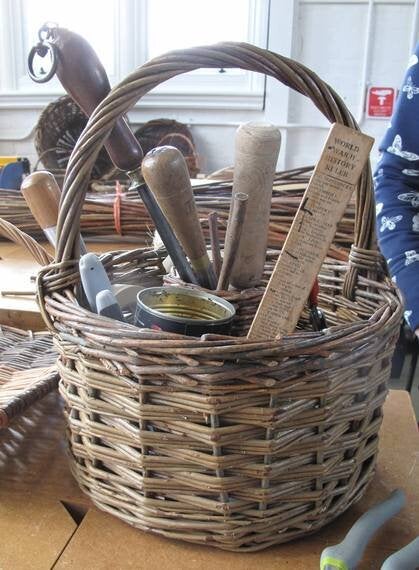
©Juliet Bernard
We were a mixed bunch of 12, eagerly waiting to learn from our very experienced tutor, Jo Hammond. Our project for the day was a flower basket or trug made from willow. In this country there are willow farms in Essex, Suffolk and down on the Somerset levels. Willow rods are cut after a year of growth and sold fresh or dried. Some have the bark taken off to produce the distinctive red buff or white rods. If the bark is left on it is called brown willow which has is a dusty olive colour to it.

©Juliet Bernard
Before you can begin the willow needs to be soaked for 4-5days to make it flexible enough to be woven. Jo had brought along huge bundles of sticks that had been wallowing in a cattle trough. Not everyone has that much space so some producers sell soaking bags to make it easier for beginners like me. Other equipment included bodkins to punch holes in sticks and open the weave, secateurs, a sharp knife and a flogging iron to bash the weaving down and a box.
To set up the base of our basket we put sticks into an old veg box as you can see.
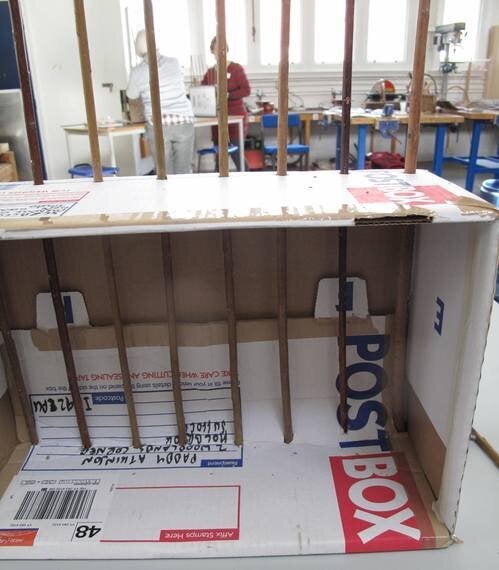
©Juliet Bernard
And then we were off weaving long willow wands into the sticks, occasionally bashing then down. I couldn't believe how quickly Jo had let us loose but what fun. Of course there is a lot more to it and I quickly discovered that, if you aren't careful to keep the sticks straight your weaving starts to bend inwards. And you need to keep your tension even so you get a nice flat weave and not peaks and troughs between the sticks because it's really easy for the sticks to be pulled out of shape as you weave.
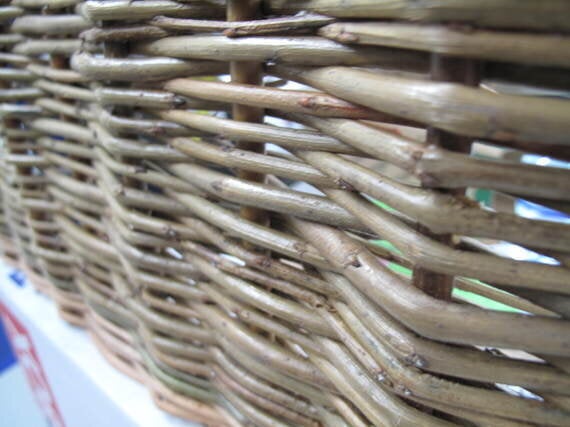
©Juliet Bernard
By lunchtime I have woven half of my trug. We pulled the sticks out of the box and then started to weave the other half. Jo taught us how to neatly finish the edges of our work and then shape our rectangle of knitting to a traditional basket shape before adding a handle.
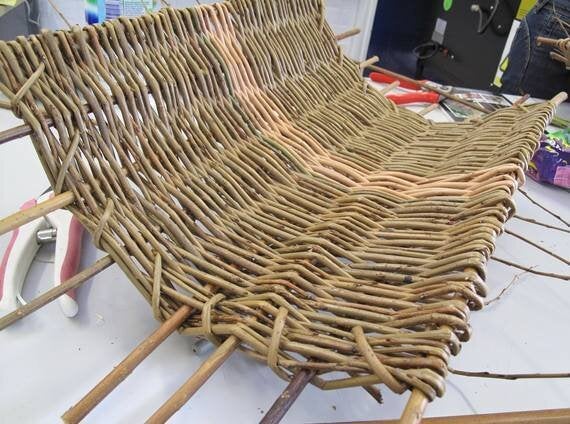
©Juliet Bernard
The basket took us all day and it was quite hard work on the hands but the sense of achievement was huge. I'm not sure how many baskets I need but I definitely want some willow hurdles in my garden, something to support my sweet peas and edging for my log store, which I will enjoy doing. Willow weaving is tremendously satisfying but you do need time and space to prepare what you are going to make.
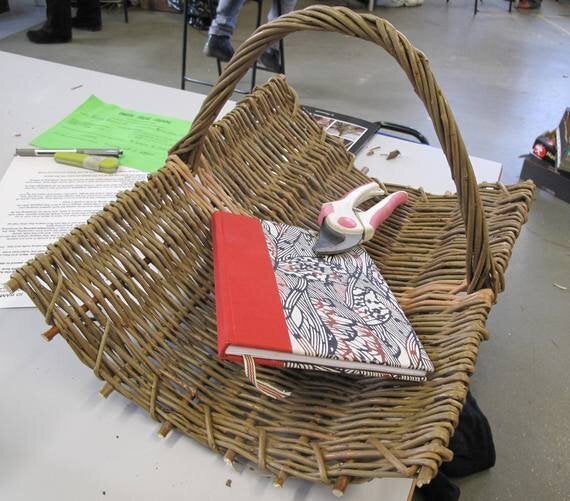
©Juliet Bernard
Jo Hammond has a fantastic book out showing techniques and some great projects. You can order it from her website here
If you want to find out about courses in your area contact the Basket Makers Association
For weaving supplies I like the Somerset Willow Growers website.